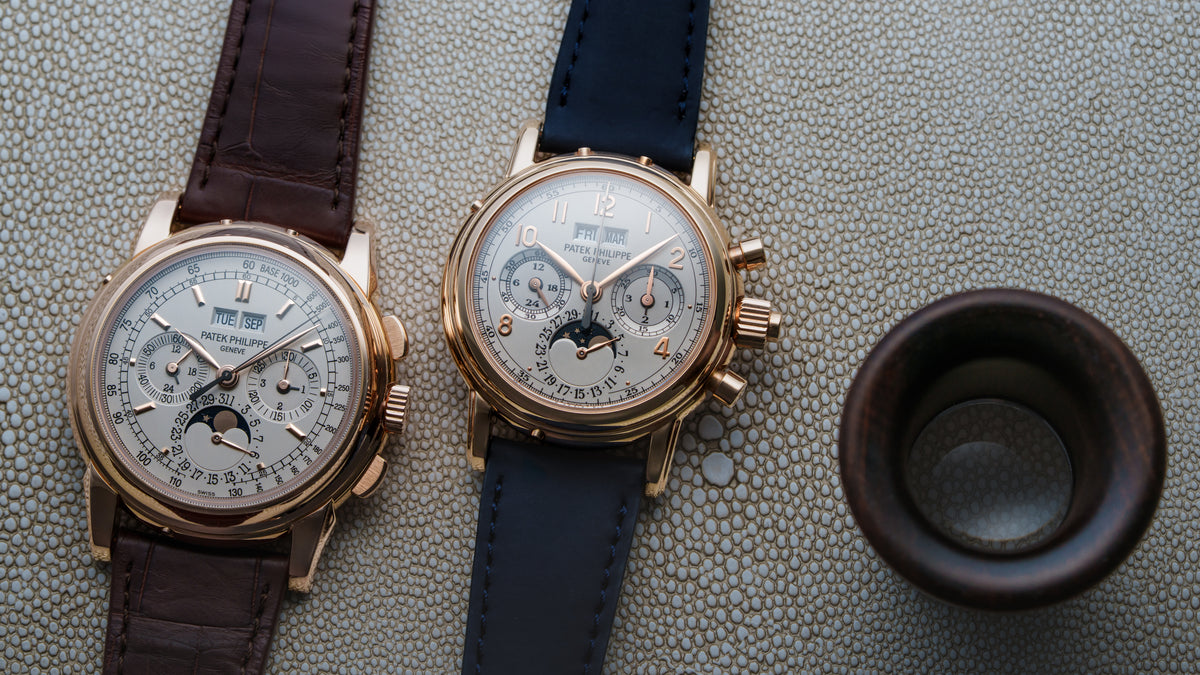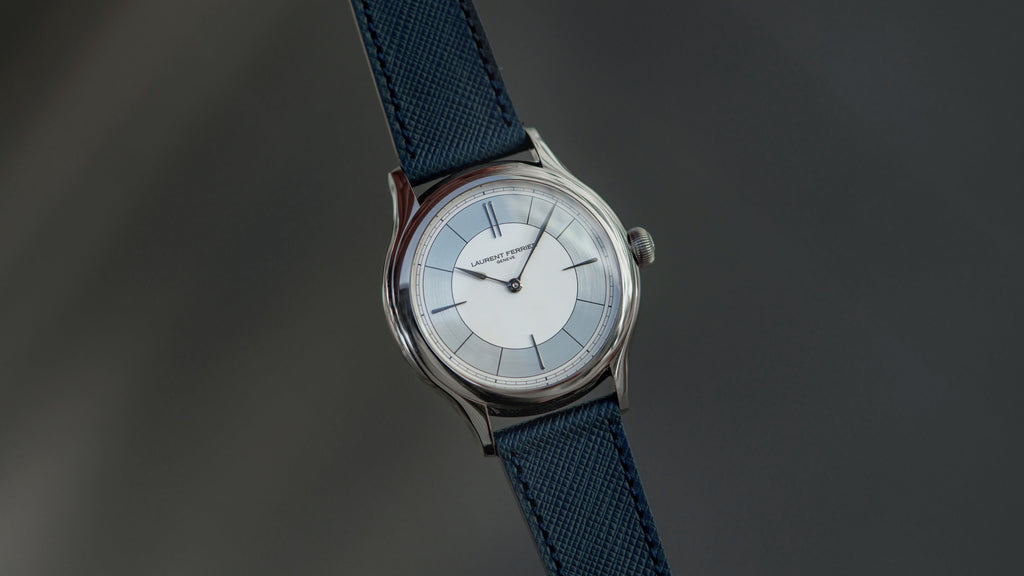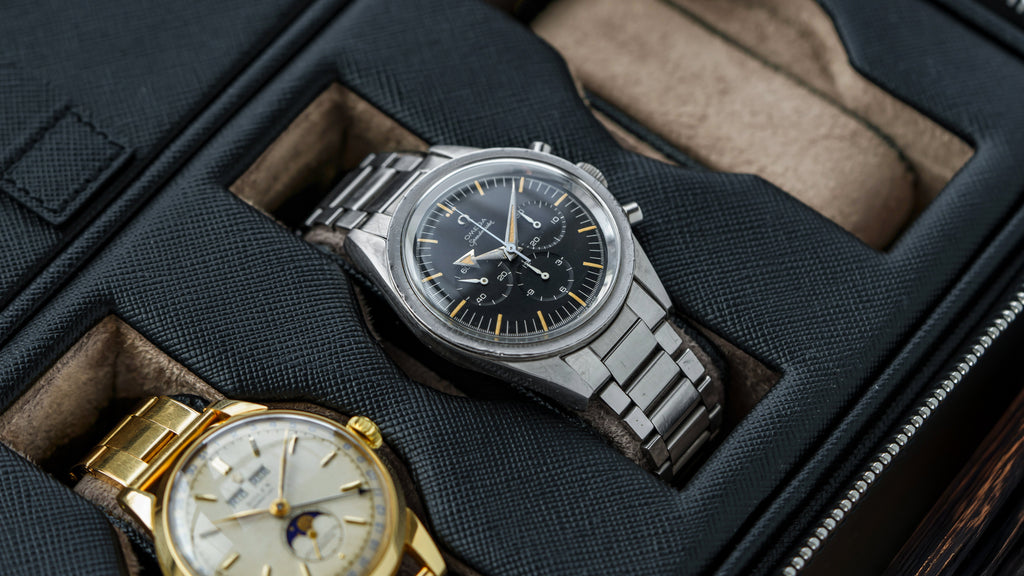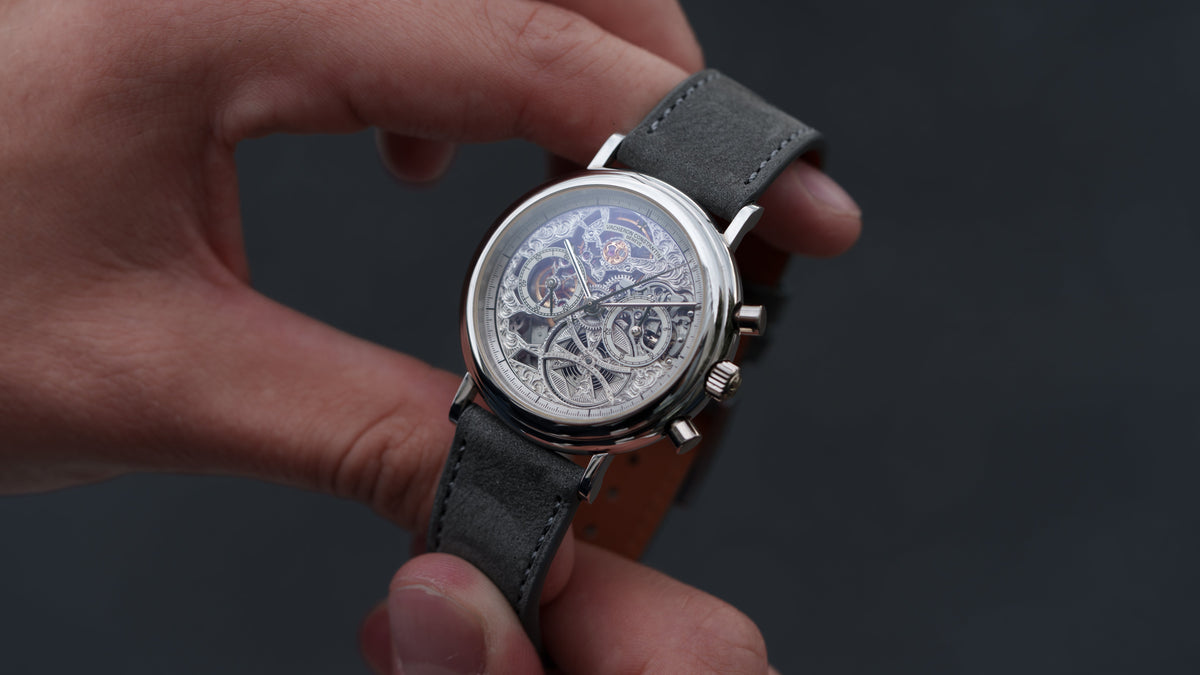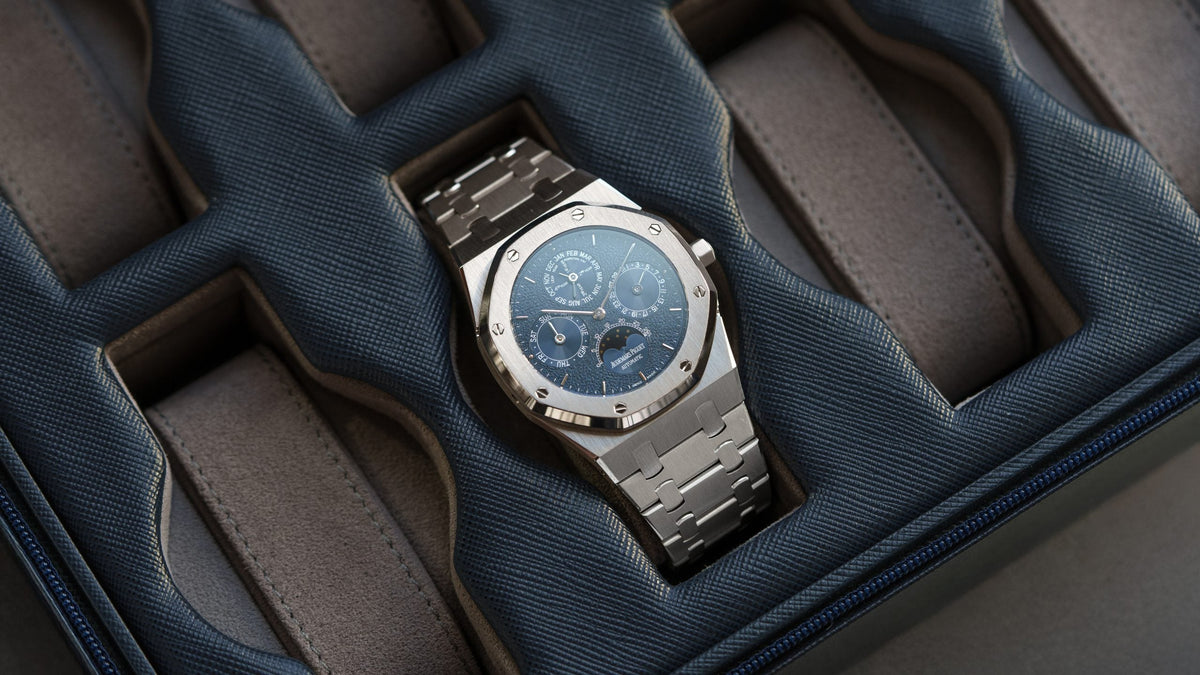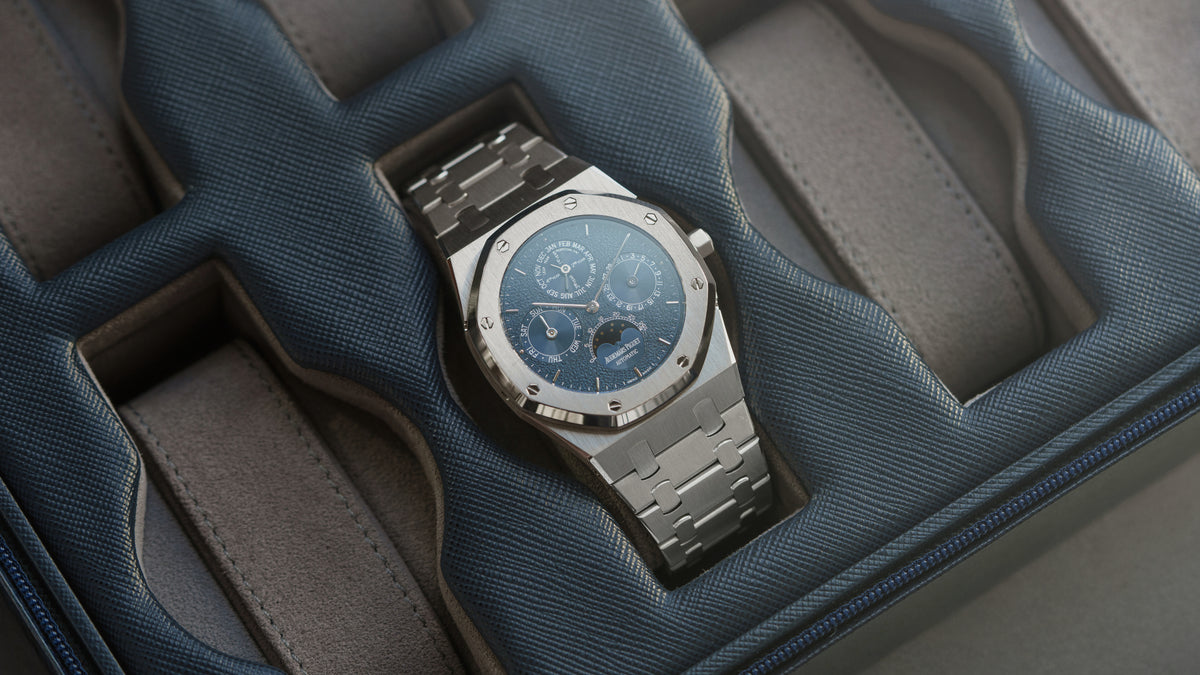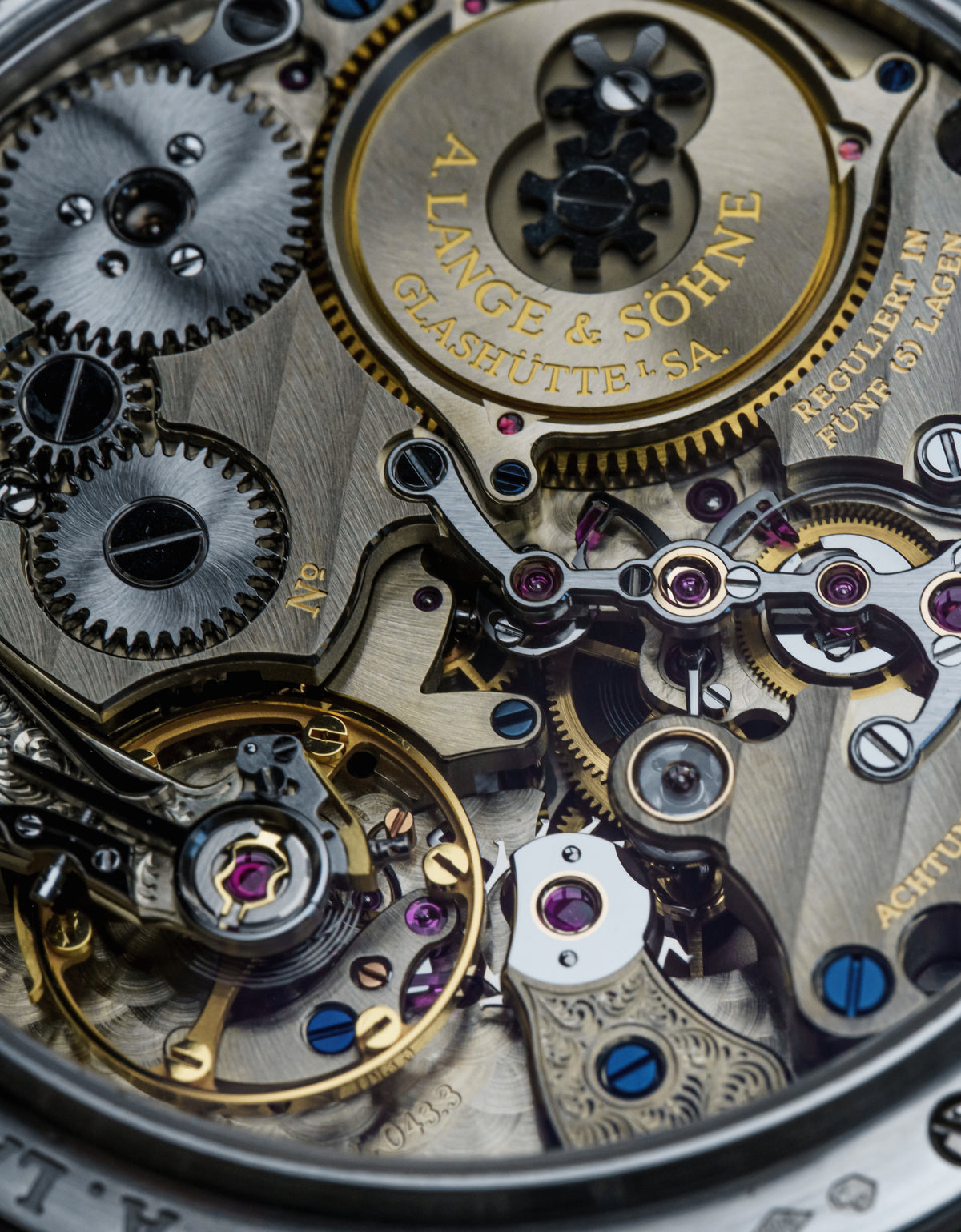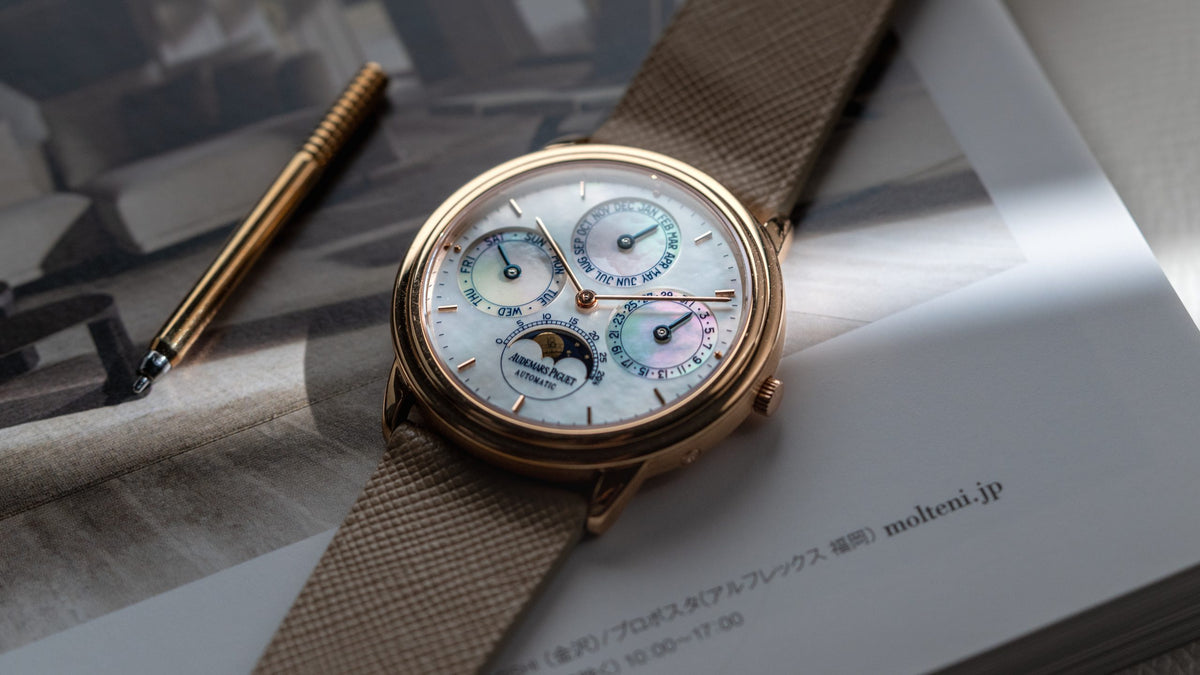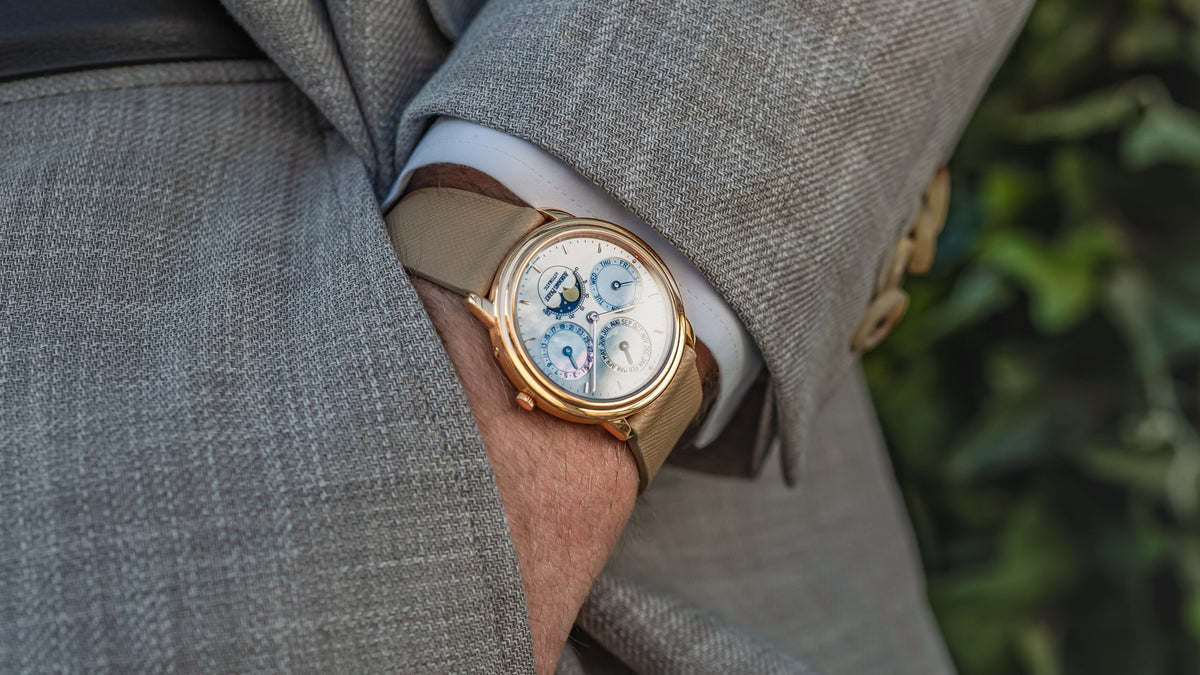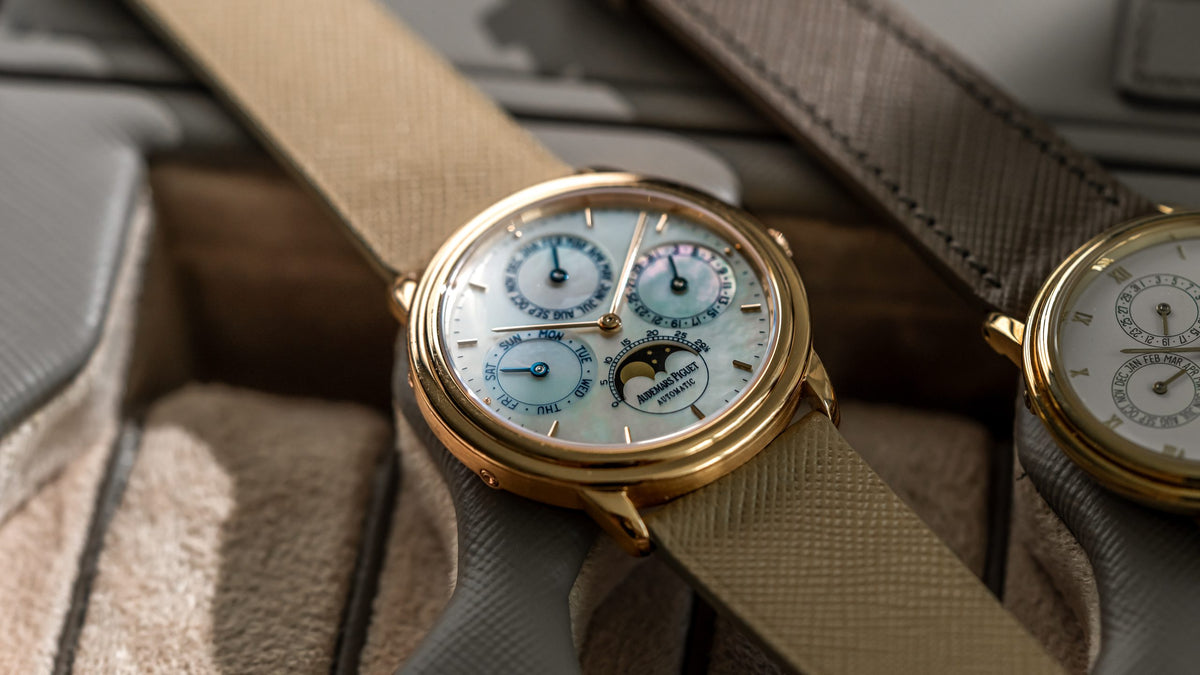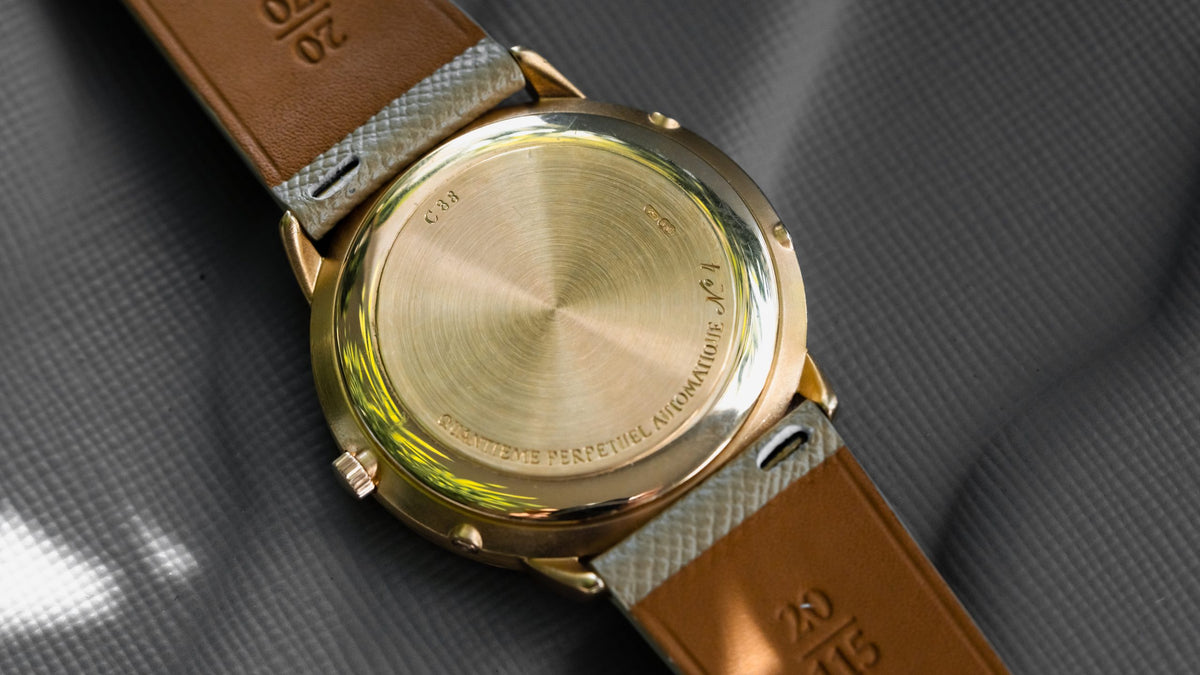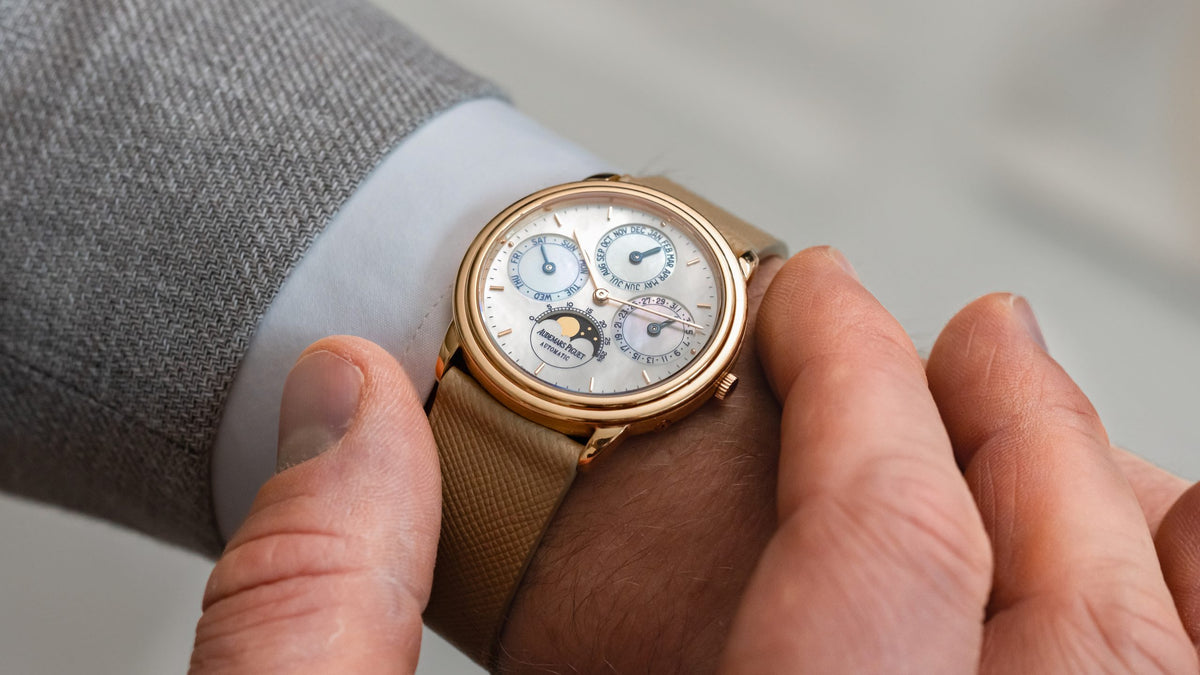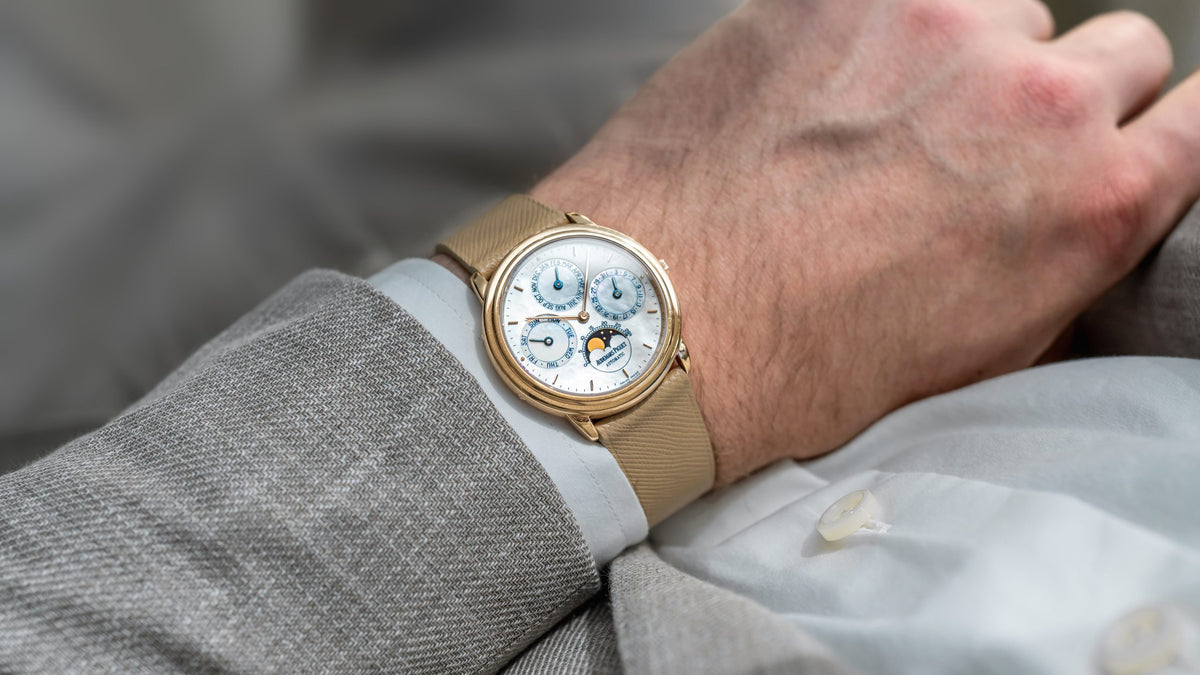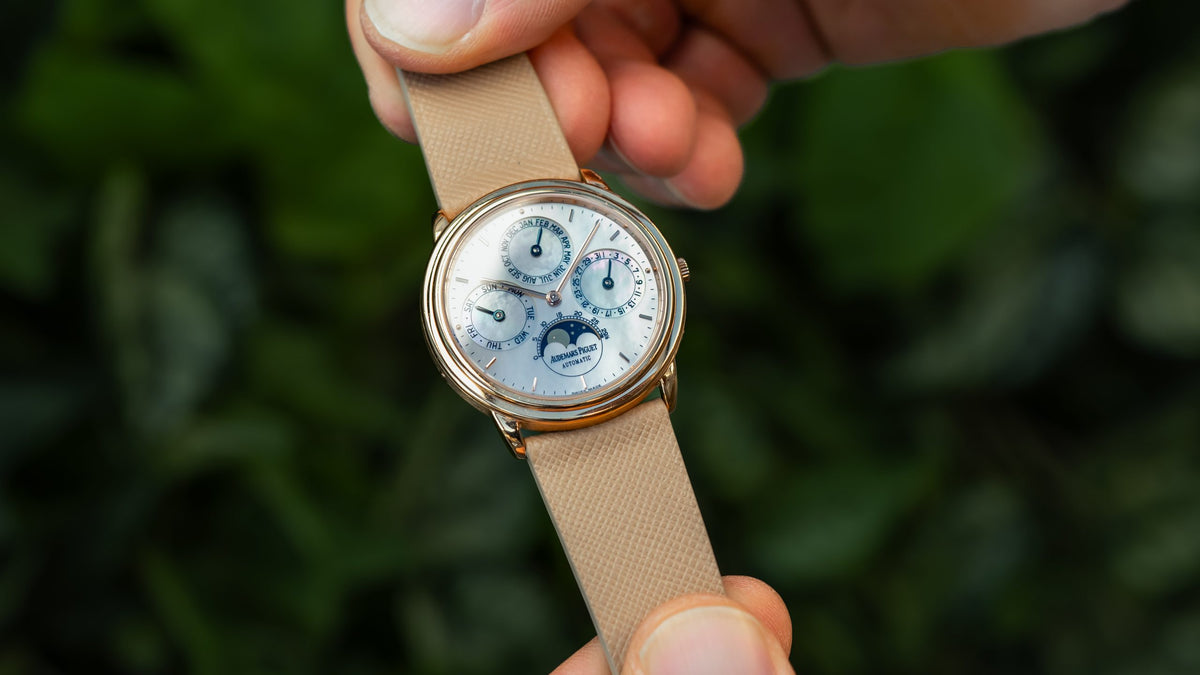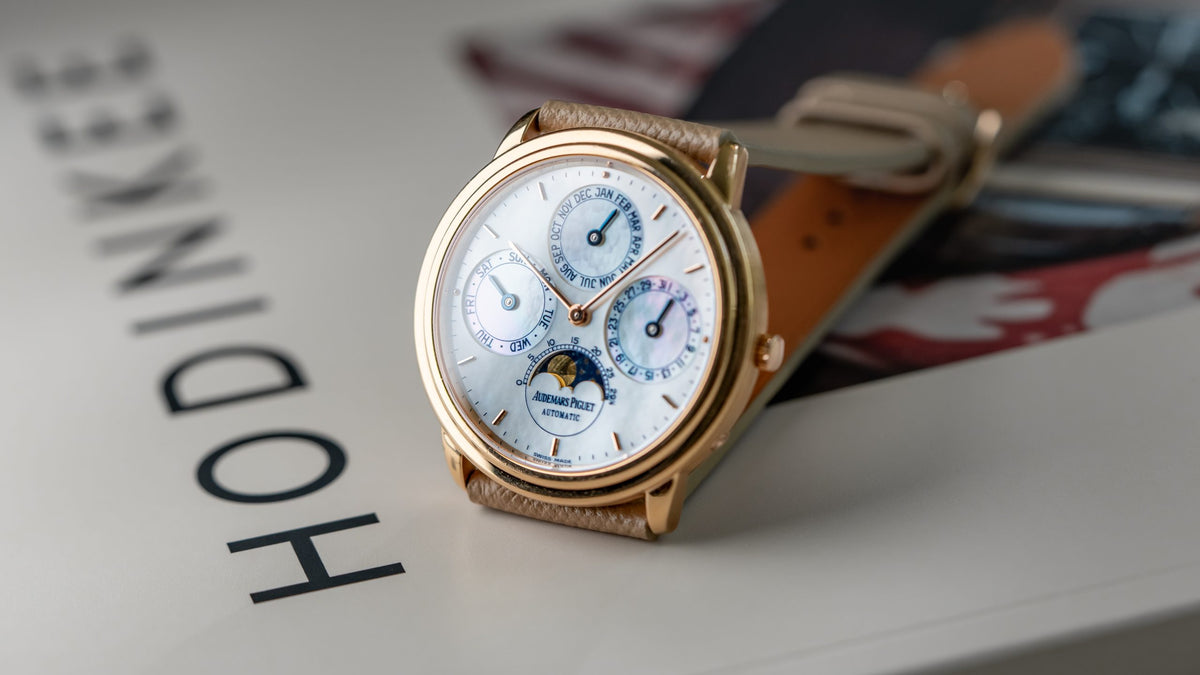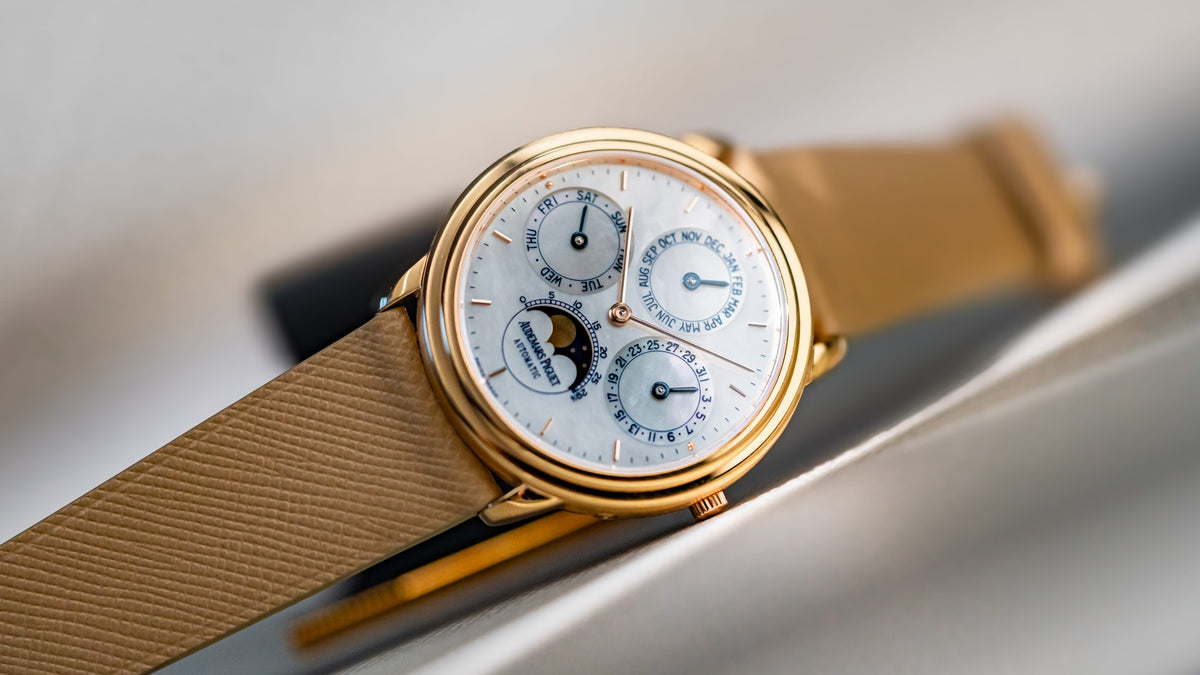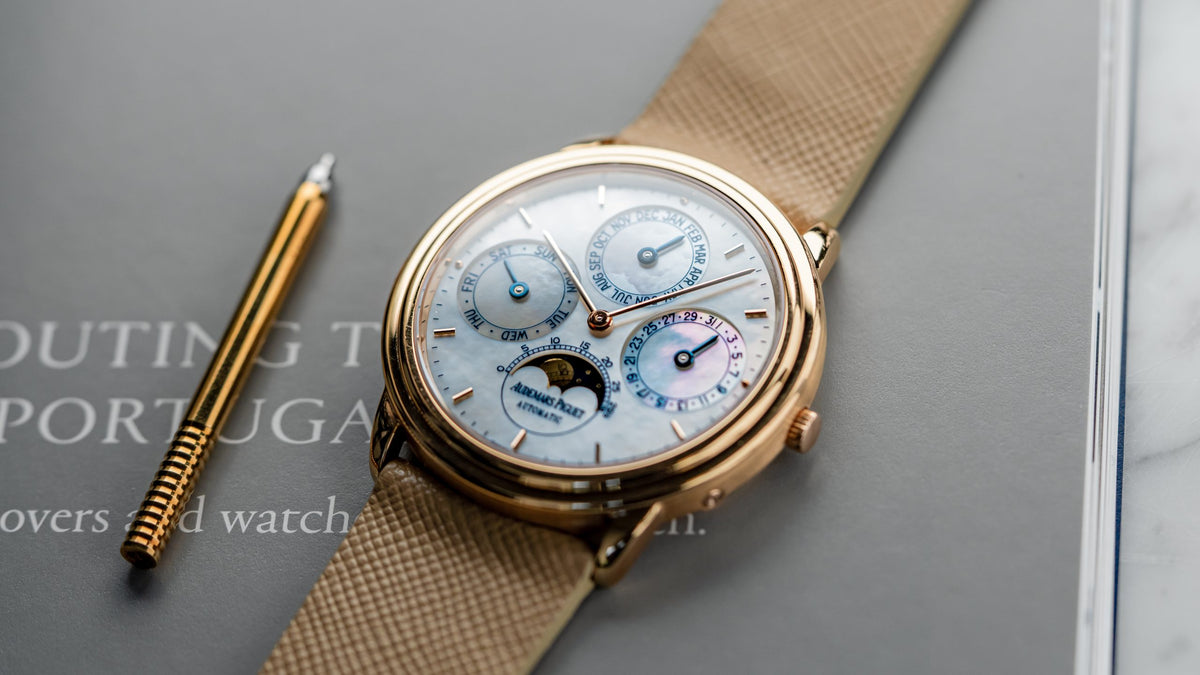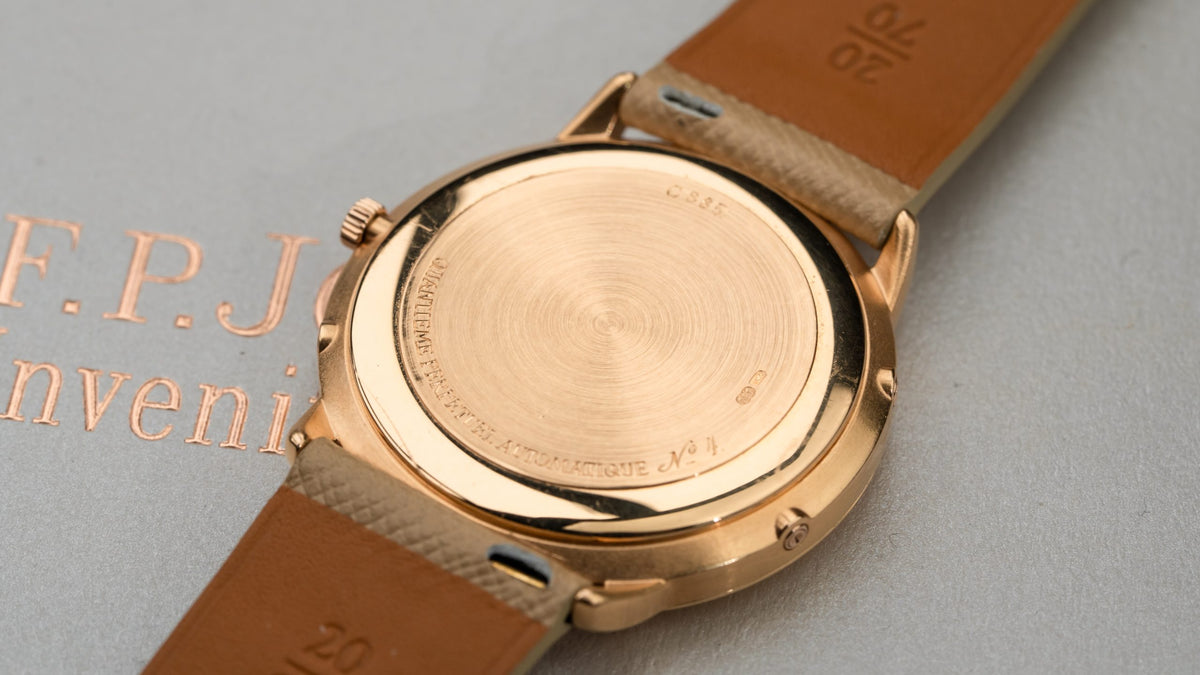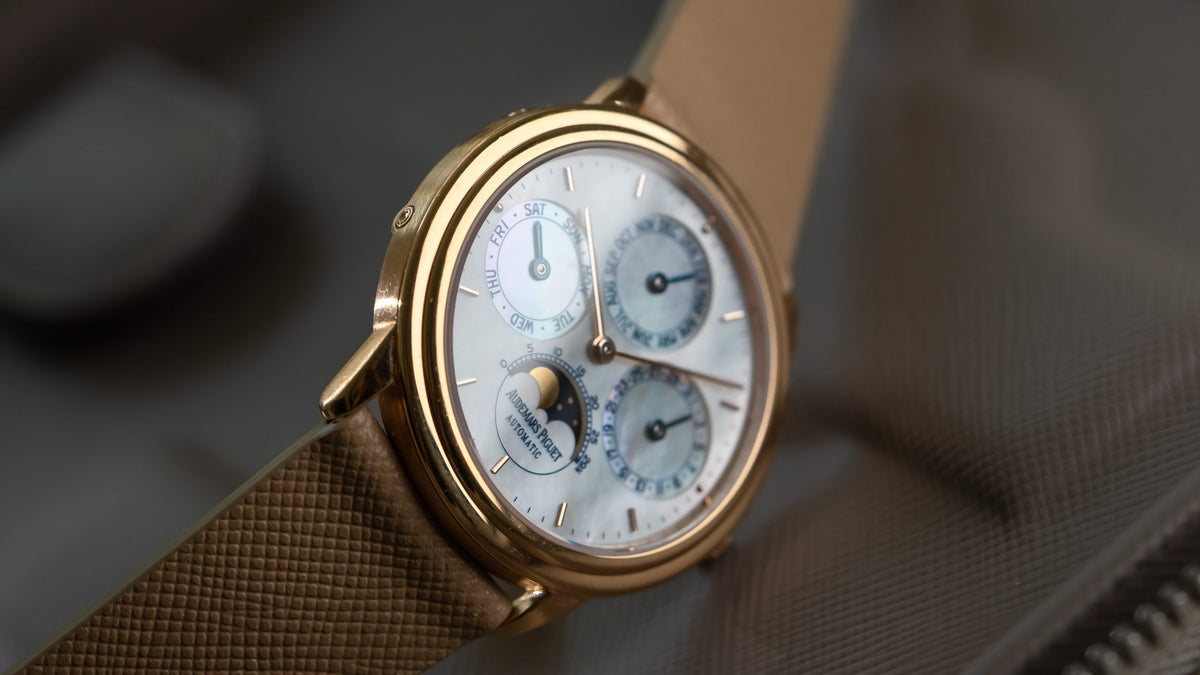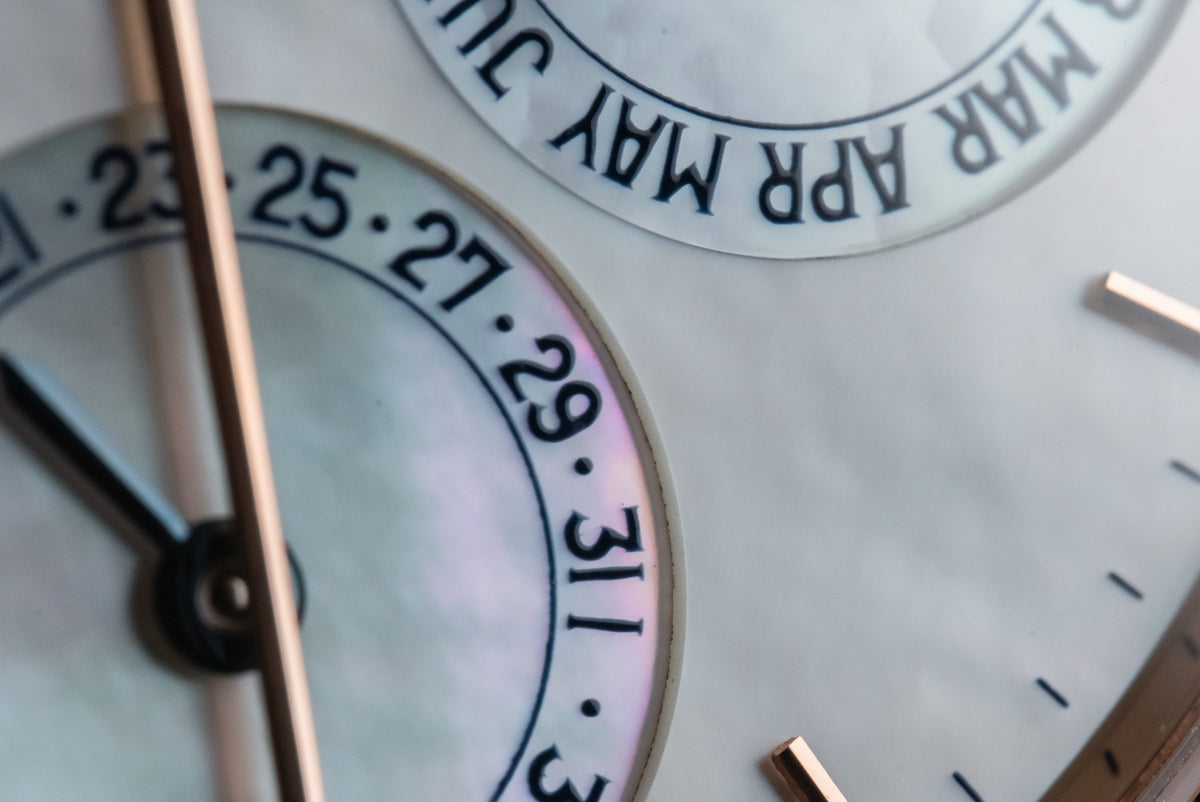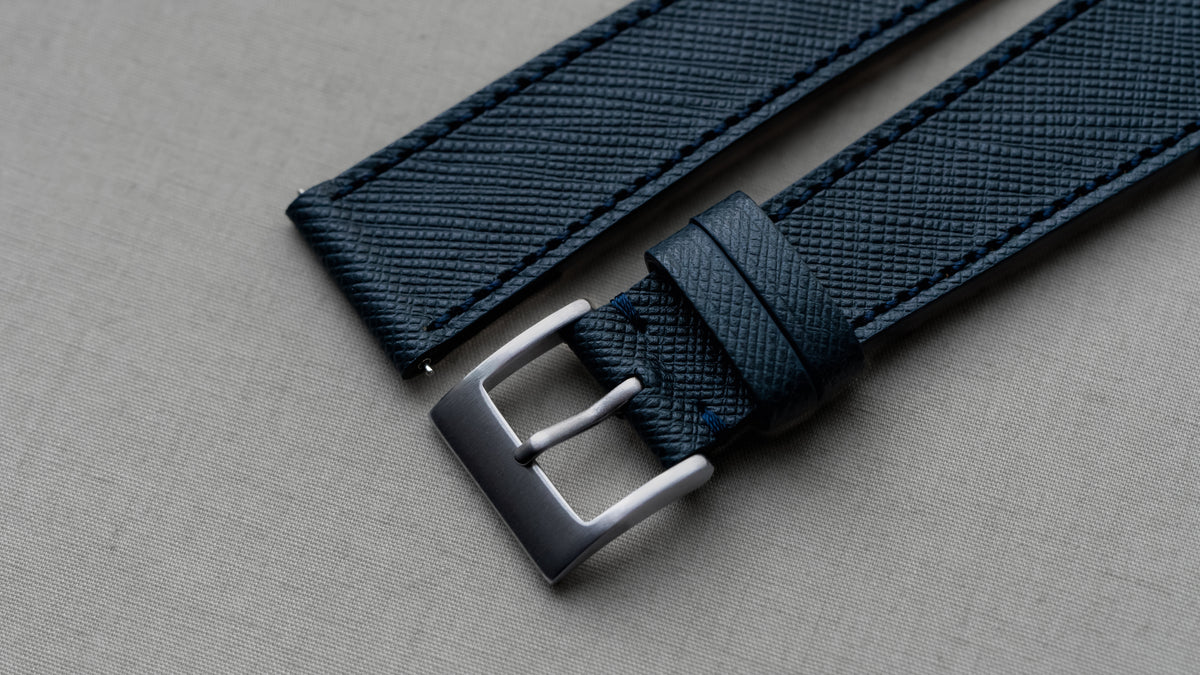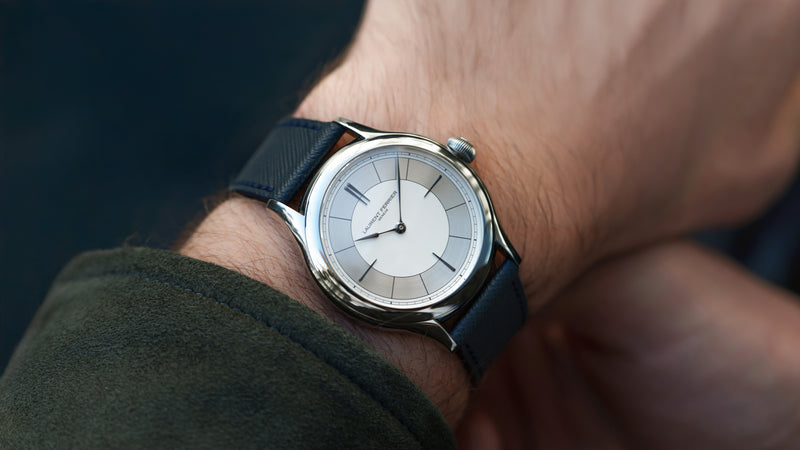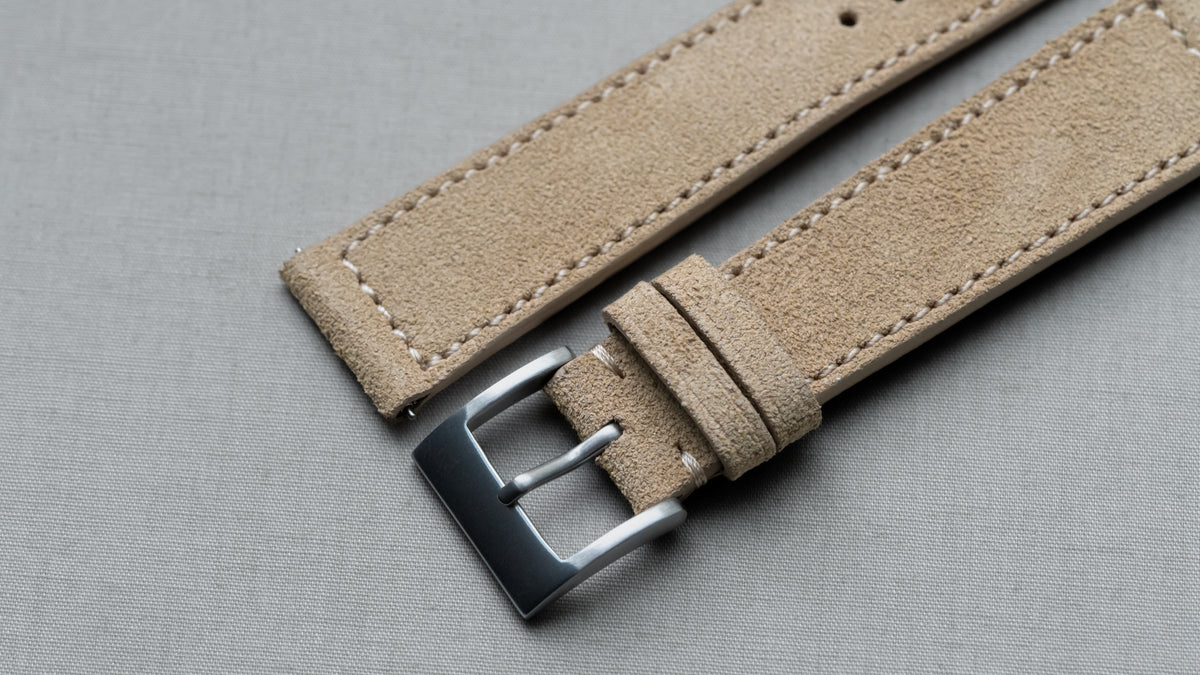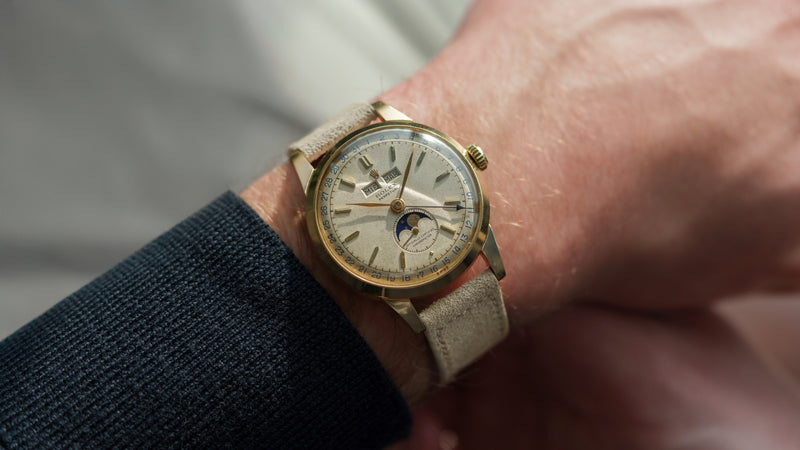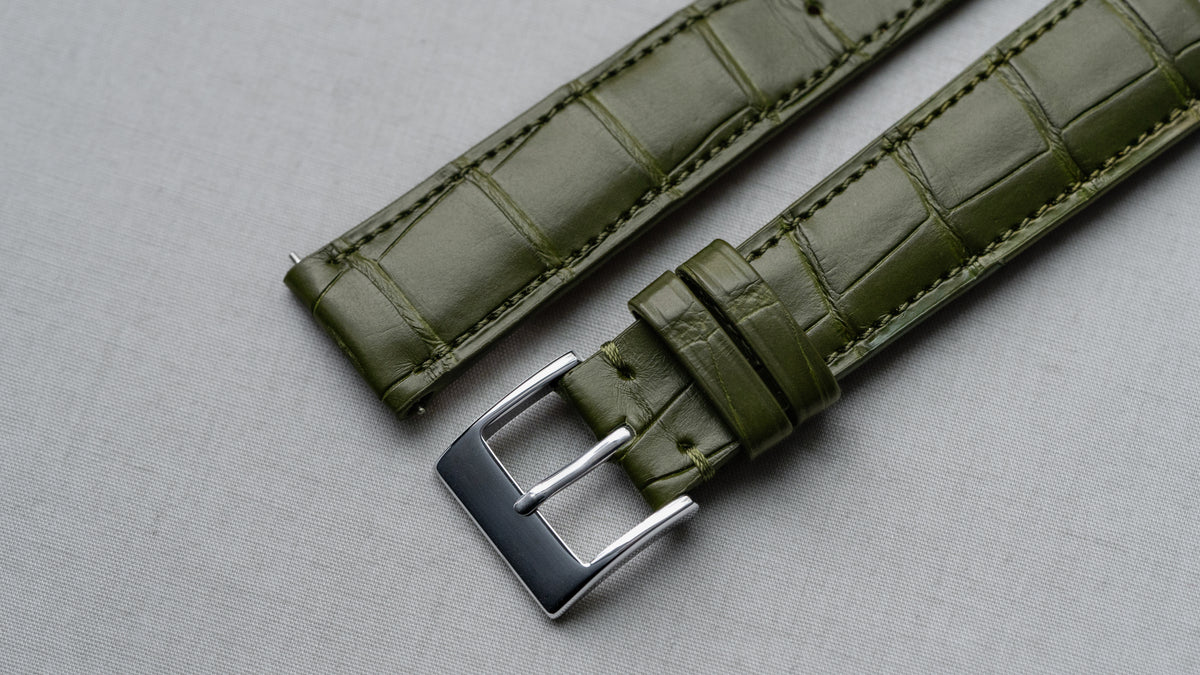25657OR, Perpetual Calendar, Mother of Pearl Dial, Pink Gold
A ref. 25657OR Audemars Piguet Quantième Perpétuel with a mother of pearl dial. There are only 362 examples of this reference to start, but it is estimated that no more than a handful were ever made with mother of pearl dials. This was, in its day, the world’s thinnest perpetual calendar at 3.95mm, the watch that proved mechanical complication still had its place in the market against the growing shadow of quartz. Its historic significance stands alone, but after researching heavily in order to write this, we’ve only been able to locate two other examples. This stone dial Quantième Perpétuel is amongst the very height in terms of collecting in these neo-vintage, ‘holy trinity’ QP references.










